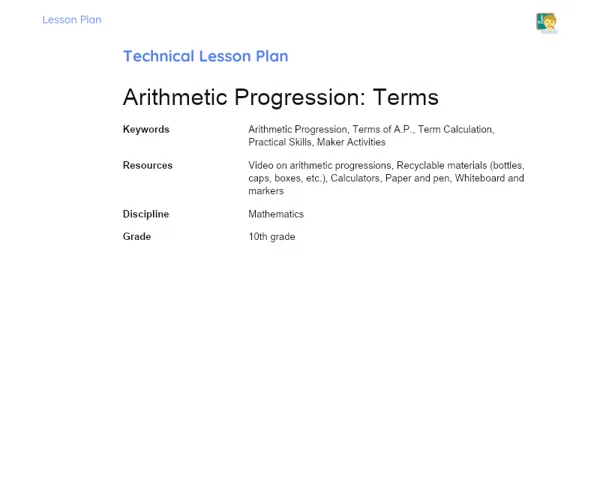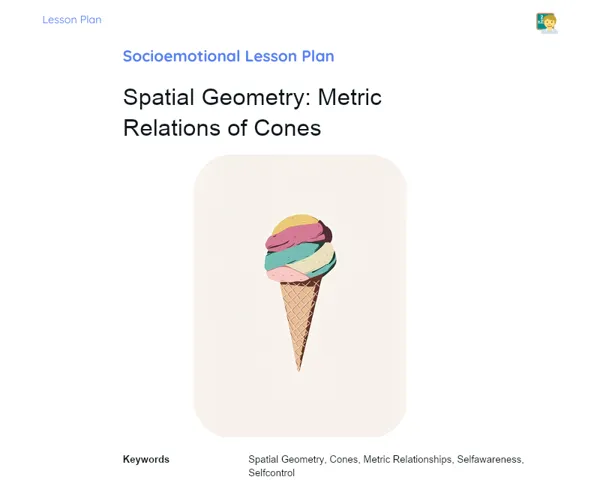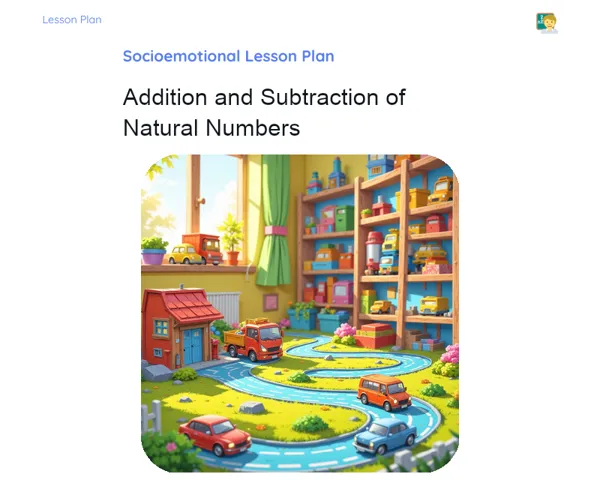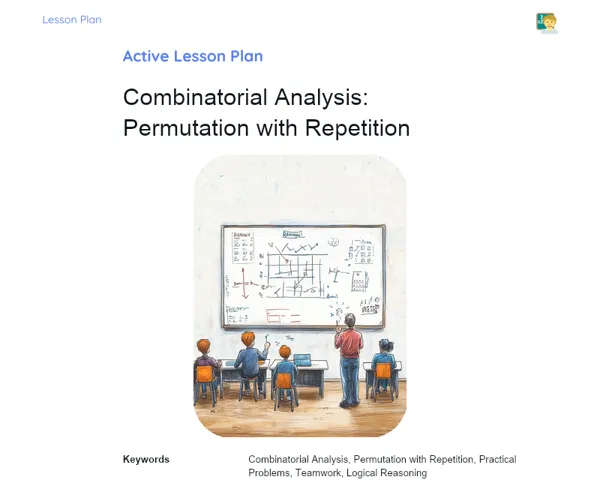Lesson Plan Teknis | Volume and Area: Cylinder
| Palavras Chave | Volume Calculation, Surface Area, Cylinders, Maker Activity, Engineering, Architecture, Product Design, Problem Solving, Practical Skills, Applied Mathematics |
| Materiais Necessários | Short video about cylinders in various industries, Computer and projector, Cardboard, Scissors, Ruler, Compass, Glue, Recyclable materials (optional) |
Objective
Duration: 10 - 15 minutes
This stage aims to introduce students to the concepts of volume and surface area of cylinders, emphasizing the significance of these skills in practical scenarios and the job market. Understanding these concepts is crucial for tackling real-world issues, like computing the volume of cylindrical containers or the area of cylindrical walls—skills that are vital in various professions, including engineering, architecture, and manufacturing.
Objective Utama:
1. Calculate the volume of a cylinder using the correct formula.
2. Determine the surface area of a cylinder for real-life applications.
Objective Sampingan:
- Connect the concepts of volume and surface area to everyday experiences.
- Cultivate practical and experimental problem-solving skills.
Introduction
Duration: (15 - 20 minutes)
This stage seeks to stimulate students' interest in the topic, underlining the relevance of volume and surface area of cylinders in practical situations and the job market. The initial activity is designed to pique students' curiosity, priming them for deeper learning ahead.
Curiosities and Market Connection
🔍 Curiosities and Market Connection: The Burj Khalifa, the tallest building in the world, utilizes cylindrical elements in its design for stability and aesthetic appeal. Civil engineers rely on volume calculations of cylinders to design and build water tanks. Packaging designers must gauge the surface area of cylinders to figure out the material needed for labels and packaging.
Contextualization
Cylinders are all around us, from ordinary items like soft drink cans to intricate structures such as grain silos. Knowing how to calculate the volume and surface area of these items can be invaluable in many fields like engineering, architecture, and product design. This knowledge helps professionals make precise measurements and effectively use materials, ultimately saving time and resources.
Initial Activity
🎬 Initial Activity: Play a brief video (2-3 minutes) showcasing various industries where cylinders play a crucial role, from manufacturing to construction. After the video, encourage students to ponder with the question: 'How might calculating the volume and surface area of cylinders influence product design or building construction?' Let students discuss in pairs and then share their thoughts.
Development
Duration: 55 - 60 minutes
This stage's aim is to equip students with a practical understanding of calculating the volume and surface area of cylinders. The mini challenge helps refine essential technical and collaborative skills for the job market. Fixation exercises ensure that concepts are consistently understood and applied in a hands-on manner.
Topics
1. Formula for calculating the volume of a cylinder: V = πr²h
2. Formula for calculating the surface area of a cylinder: A = 2πrh + 2πr²
3. Practical applications of these formulas in various fields like engineering and design
4. Solving problems related to the volume and surface area of cylinders
Thoughts on the Subject
Encourage students to think about how the formulas for volume and surface area of cylinders can be utilized in different professions and daily scenarios. Discuss how these calculations can lead to better use of materials and savings in real-life projects.
Mini Challenge
Creating a Soda Can Model
Students will work in small groups to create a model of a soda can using cardboard and recyclable materials. They will need to calculate the volume and surface area of the can they designed.
1. Divide students into groups of 3-4 members.
2. Provide cardboard, scissors, rulers, compasses, and glue to each group.
3. Ask students to draw and cut two circular bases with a specified radius and a rectangle to serve as the side of the cylinder.
4. Students must compute the volume and surface area of the can using the formulas they've learned.
5. Guide groups to assemble the model by gluing the bases to the rectangle.
6. Each group will present their model and explain how they arrived at their calculations for volume and surface area.
Foster practical and applied skills, including measuring, cutting, and assembling, while reinforcing the mathematical concepts surrounding volume and surface area of cylinders.
**Duration: 35 - 40 minutes
Evaluation Exercises
1. Calculate the volume of a cylinder with a radius of 5 cm and a height of 10 cm.
2. Determine the surface area of a cylinder with a radius of 3 cm and a height of 7 cm.
3. A cylindrical water reservoir has a radius of 2 meters and a height of 5 meters. What is the volume of water it can accommodate?
4. A packaging design company needs to estimate the amount of material required to create a label that completely covers a cylindrical can with a radius of 4 cm and a height of 12 cm. What is the surface area that the label must cover?
Conclusion
Duration: 10 - 15 minutes
This stage is designed to solidify students' comprehension, ensuring they grasp the practical application of the volume and surface area concepts of cylinders. Through discussion, summary, and closing remarks, students are encouraged to reflect on the relevance of the topic, strengthen their understanding, and visualize how this knowledge applies in real-world and professional contexts.
Discussion
💬 Discussion: Facilitate an open discussion on the insights and learnings students gained from the lesson. Ask how they felt about using mathematical formulas in creating the model and in real-life situations. Encourage them to reflect on challenges faced and solutions found, reinforcing the importance of teamwork and critical thinking. Inquire how this knowledge might be utilized in future careers and daily life.
Summary
📚 Summary: Summarize the key content covered in the lesson, including the formulas for calculating volume (V = πr²h) and surface area (A = 2πrh + 2πr²) of a cylinder. Stress the importance of these concepts in addressing practical and professional problems such as product design, construction projects, and packaging development.
Closing
🔚 Closing: Demonstrate how the lesson interconnected theory and practice, linking mathematical calculations with hands-on activities and real-world applications. Reinforce the value of the knowledge gained across the various professional fields, highlighting how mathematics serves as a powerful tool for optimizing resources and resolving everyday challenges.



